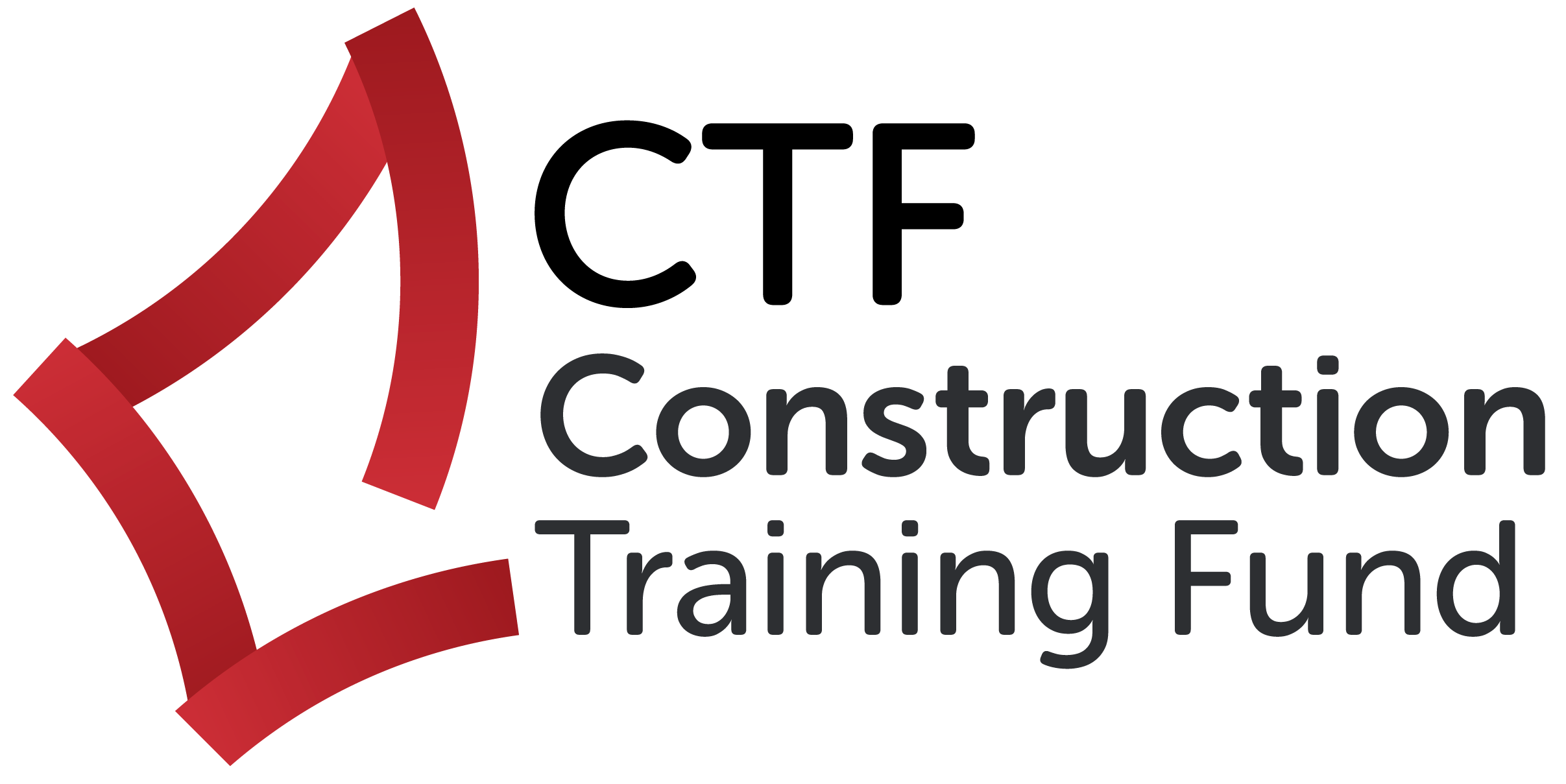In 2022, is construction still a male-dominated industry?
Yes. Currently, women comprise only 12% of the Australian construction industry, a decrease from 17% in 2006. So what’s preventing them from choosing, or returning, to a career in the sector?
In November 2021, Construction Training Fund (CTF) conducted research with parents, women and youth to explore the factors preventing women from choosing a construction career. The key barriers were found to be lack of female representation and negative perceptions about the diversity of roles, training and workplace conditions and career progression opportunities.
WA has an ageing workforce, a skills shortage and fewer young people are entering the construction industry, creating challenges for our sector. Despite the increase in building and construction apprenticeships in WA, we still have more work to do to position construction as a career of choice. Now, more than ever, we need to encourage women to pick up the hammer, break down barriers and smash gender stereotypes.
So, what are the barriers to women entering and staying in the construction industry and how are we working to overcome these?
Let’s find out…
Why are there so few women in construction?
Look at any WA construction site and you’ll see that women are outnumbered by men. For a male-dominated industry, this isn’t surprising. While many of the barriers to women in construction are unintentional, they are evident.
- Lack of awareness among female students and job seekers
The focus on Science, Technology, Engineering and Mathematics (STEM) subjects in WA schools hasn’t been progressed to position construction as a feasible career for women. A recent study conducted by CTF found that teachers and parents do not recommend construction to school-aged students, meaning young females are not inspired to consider it as an exciting, appealing career.
- Not enough female role models in the industry
There is a lack of female representation in the industry, particularly at a senior level, which can have a negative influence on perceptions of the sector. In addition, construction women are more publicly visible in entry-level roles, such as directing road traffic, rather than in senior positions.
A 2019 Randstad ‘Women in Construction’ survey found that nearly four in ten women (39%) believe that a lack of female role models in senior positions is a key barrier to progression in the industry.
- Lack of understanding on the diversity of construction roles
Choosing a construction career doesn’t mean you have to be a sparky or a chippy. There is a misconception that the industry only offers ‘blokey’ physical-based roles. From health and safety to building inspection, surveying and more, there is a multitude of jobs available. Changing perceptions of the stereotypical ‘male tradie’ is vital if we’re to succeed with encouraging more women into building and construction.
- Working conditions for female workers
Part of encouraging more women into the sector is creating a more inclusive environment. Do women have suitable facilities on all sites? Female site toilets, adequate lighting in the evening and appropriate PPE are a necessity.
Ever heard of the ‘leaky pipeline’? It describes the underrepresentation of women in STEM due to fewer women returning to work after having children. Many on-site construction roles demand early starts and weekend shifts, making it difficult to balance work and home life. So it’s understandable some women can be deterred from joining or returning to the industry.
- Recruitment is skewed towards men through informal networking
Traditionally, the sector favours more informal recruitment processes. Casual networking, industry connections and word-of-mouth recommendations benefit men in a male-dominated industry. This makes it harder for women to get a ‘foot in the door’, making them more likely to enter through formal recruitment processes.
But while there are barriers, there is also change. If women intend to choose construction as a career of choice, they need to know about the attractive career prospects available and see more women in leadership to know that career progression is a real possibility.
Why construction should be a career of choice for more women
- Job Security
Nation-wide, the industry is expanding with an anticipated annual growth of 3.4% between 2022 and 2025. With a growing sector and a plethora of work projects in the pipeline, the industry offers job security, good earning potential and opportunities for progression.
- Health Benefits
We all know that a sedentary lifestyle isn’t good for our physical health. Many roles in the construction industry don’t require sitting at a desk. Being outside in the fresh air is just one of the things that Lizzie, a 38-year old concreting apprentice, loves about her job.
“It’s the best job in the world!” she says. “Getting paid to be outside, making people’s dreams come true and getting a workout all at the same time!”
- Variety and opportunity
The diversity and scope of roles available is enormous, offering great opportunity to learn and progress in your career. If you have an excellent work ethic and/or entrepreneurial ambition, this is the industry for you.
- Problem-solving
It’s generally considered that women are good problem-solvers. Rachel, a third-year electrical apprentice says, “I’m quite practical. I love problem-solving. Once you have finished your apprenticeship, you can be an electrical supervisor or an engineer if you are happy to work hard. The pathway is there if you want to work for it.” Our industry needs more savvy problem solvers like Rachel!
- Making a difference
Do you want to make a difference? Whether it’s applying skills from another role to bring about change, championing equality and diversity in the workplace or the simple satisfaction of making something tangible with your hands, the industry offers something for everybody.
Encouraging more women into WA’s construction industry
Recruiting more women should be more than a tick-box exercise. It should be considered essential to long-term industry viability.
Businesses with more gender diversity are more collaborative, perform better and are more profitable. So, how do we encourage more women into construction?
- Active engagement with schools and young people
CTF recognises the importance of training the next generation of construction workers. CTF offers a variety of initiatives for young people and children of school age, including:
- Try-a-Trade program for Year 9 and Year 10 students;
- Pre-Apprenticeship Award for relevant Certificate II qualifications;
- Scholarships for Construction Pre-Apprenticeships in Years 11 and 12.
Through our Construction Futures Centre – a fun-filled interactive space for WA youth to explore career pathways.
The Centre features hands-on displays, arcade-style games and virtual reality simulators to educate and inspire young people about the range of construction jobs available to them. Teachers and career counsellors can browse the Centre’s resources to explore the careers available to students.
- Additional support for employers of WA’s female and mature-age apprentices
Building and construction employs 36% of WA’s apprentices and trainees. One of those is Lizzie, an apprentice from Perth.
“After almost eleven years in the WA Police, I decided the force life wasn’t for me, so I decided to try a concreting apprenticeship,” she explains.
Lizzie is completing her apprenticeship at BKJ Concreting in Malaga . Being female and of mature age, her employer received an additional $2,000 in CTF grants to support the cost of her training.
“It’s fantastic that this financial support is available,” she says. “It lessens the wages cost for my employer and provides them with an additional incentive for them to take me on.”
There are additional grants for Aboriginal and Torres Strait Islander apprentices and those based in regional areas.
“Starting an apprenticeship was the best decision I ever made!” says Lizzie.
If you’re looking to recruit an apprentice, use our Employer Funding Calculator to learn about the grants you could be eligible for.
- Strategies to support flexible work
Flexibility helps address the ‘leaky pipeline’[NA1] and encourages more diversity across the board. Retaining women in the sector requires more flexible work practices to support their work-life balance. Some positive strategies to enable this include:
- Offering job sharing
- More staggered start and finish times
- Active support of parental leave for all employees; and
- Creating flexible provisions for women returning to work after having children.
- Changing workplace culture to support equal opportunities
Equal pay for equal work and equal opportunity for leadership positions will help drive the future success of our sector.
Workplace culture plays a key role in that.
Being aware of unconscious bias, creating transparent recruitment and promotion processes and offering more networking opportunities will help attract and retain female staff. Female retention is also improved by female networking and mentorship, providing a sense of community lacking in a male-dominated industry. It can also support progression from low and semi-skilled jobs to more advanced roles.
To make all this happen, a gender-equal culture needs to be supported by everyone, not just ‘from the top’
- Promoting prominence and visibility of female role models
From the building site to the boardroom, women’s involvement and their ability to excel in the industry is key to a sustainable and inclusive workforce.
A keen advocate for women in construction, Tiffany Allen, CEO of CTF says, “attracting women to the industry is important, but equally important is ensuring that our sector is inclusive so that women will stay, progress to leadership positions and become an equal part of our workforce.”
A whole-of-industry approach is needed to improve female participation, visibility and progression in WA building and construction. Organisations like the National Association of Women in Construction (NAWIC) also help drive positive change and are lobbying for 25% female participation by 2025.
Site culture has changed considerably over the years but there is still more work to do. Part of that is making sure there are female role models and voices for change in our industry. If we do this, we can attract, recruit and retain more women in construction and create a more inclusive WA workforce.
If you are interested in learning more about pathways into construction for women, contact one of our Industry Training Advisors at ita@ctf.wa.gov.au or call us on (08) 9244 0100.
Last modified on:

